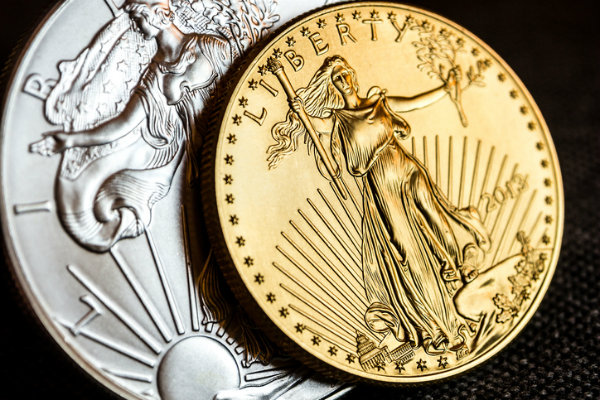
History of U.S. Mint Coins
The U.S. Mint has produced coins for this nation for over 225 years. The Mint actually played a big part in bringing a young United States together by creating a national currency.
In 2019, the Mint produced 11.9 billion coins for circulation, in both its Philadelphia and Denver plants. Most of these coins are pennies ‒ nearly 7 billion of them in 2019.
What Is the U.S. Mint?
During the Colonial period, deals were made using foreign or colonial currency, or livestock using a barter system. Following the Revolutionary War, when the United States was governed by the Articles of Confederation, states were authorized to mint their own coins.
Many citizens of the new nation were wary of federal power and opposed the minting of money by a central authority. Prior to the establishment of a federal mint, currency coinage was issued by individual state banks, and in some cases various foreign currency was also used. However, a coalition led by Federalist Alexander Hamilton won the argument, thus the United States Mint and the First Bank of the United States were established.
When Did the Mint Begin Circulating Coins?
The Constitution was ratified in 1788, and almost immediately discussions began about the need for a national mint. That led to the passage of the Coinage Act in 1792, and just one year later the U.S. Mint began circulating its first coins.
The most common coins that the mint has produced include:
- 1 cent
- 5 cent
- 10 cent
- Quarter dollar
- Half dollar
- Dollar
When Was the First Mint Built?
The first mint, which was the first federal building to be authorized by the U.S. government, was built in Philadelphia in 1792. An act of Congress in 1828 made the Pennsylvania location for the mint permanent. The Philadelphia Mint today can produce 1.8 million coins an hour, 32 million coins a day, and 13.5 billion coins every year.
As the United States grew, the need for greater minting capacity grew. Today there are four mints, with Denver, San Francisco, and West Point joining Philadelphia. The bullion depository at Fort Knox is also part of the mint system.
When Did the Mint Become Independent?
President George Washington made the Department of State the supervisor of the mint. In 1799, the mint was made an independent agency, while the Coinage Act of 1873 led to it becoming a bureau of the Treasury Department. The bureau was only named the United States Mint in 1984.
What Does the Mint Do?
The mint manufactures and ships all U.S. coins for circulation to the Federal Reserve Banks and branches, which then uses depositories to issue coins to the public and the business community. It safeguards the Treasury Department’s stored gold and silver and other monetary assets. Through the American Eagle Bullion Program, the mint also offers for sale gold, silver and platinum commemorative and collector coins, along with national medals.
Are U.S. Mint Coins a Good Investment?
Gold, silver, palladium and other coins cater to investors of both the bullion and investment-grade markets. “Bullion” refers to coins and bars recognized as being at least 99.5% pure. Such coins and bars vary in weight and size but typically are sold in sizes from 1/10th ounce coins to 1 kilo bars. The fact that they are divisible is an added benefit, which also allows for easy storage.
Bullion value primarily depends on its weight and metal content. Since 1986, the U.S. Mint has made bullion coins of gold, silver and platinum. The most well-known bullion coins are the American Gold Eagle, the Gold Nugget from Australia, the Maple Leaf from Canada and the Krugerrand from South Africa.
Of the coins above, the American Gold Eagle is most often used for investment. It’s offered in denominations of one-tenth ounce, one-quarter ounce, one-half ounce, and one ounce. This offers great flexibility because you can purchase fractional denominations.
Investment-grade certified coins have the same fractional benefits and storage opportunities as bullion. However, these coins are traded on a different market, not tied to the current price of gold. These coins were minted before 1933 and have been graded and certified by one of the major coin grading services, such as NGC or PCGS. These coins also have a population report, which reveals the total amount of said coins that exist.
US Mint Coins For Sale
There has never been a time that humans have not sought and desired gold in all its forms, and today, the financially conscious take full advantage of gold as an investment vehicle. Republic Monetary Exchange has U.S. Mint gold coins and bars for sale. We can supply you with the following certified gold investment-grade coins:
- $20 Gold Liberty
- $20 St. Gaudens
- $10 Gold Liberty
- $10 Gold Indian
- $5 Gold Liberty
- $5 Gold Indian
- $2.50 Gold Liberty
- $2.50 Gold Indian
And the following gold bullion coins and bars:
- Gold American Eagle – United States (1986-Present)
- Gold American Buffalo – United States (2006-Present)
- Gold Canadian Maple Leaf – Canada (1979-Present)
- Gold Krugerrand – South Africa (1967-Present)
- Gold Austrian Philharmonic – Austria (1989-Present)
- Gold Panda – China (1982-Present)
- Gold Bars – Various Private Mints
At Republic Monetary Exchange, our precious metals experts will walk you through the process of investing in gold and silver coins and bars that boost the value of your portfolio. Whether you’re new to investing in gold and silver and want to understand more, or whether you’re an old hand who wants to diversify your investments, call us today.
